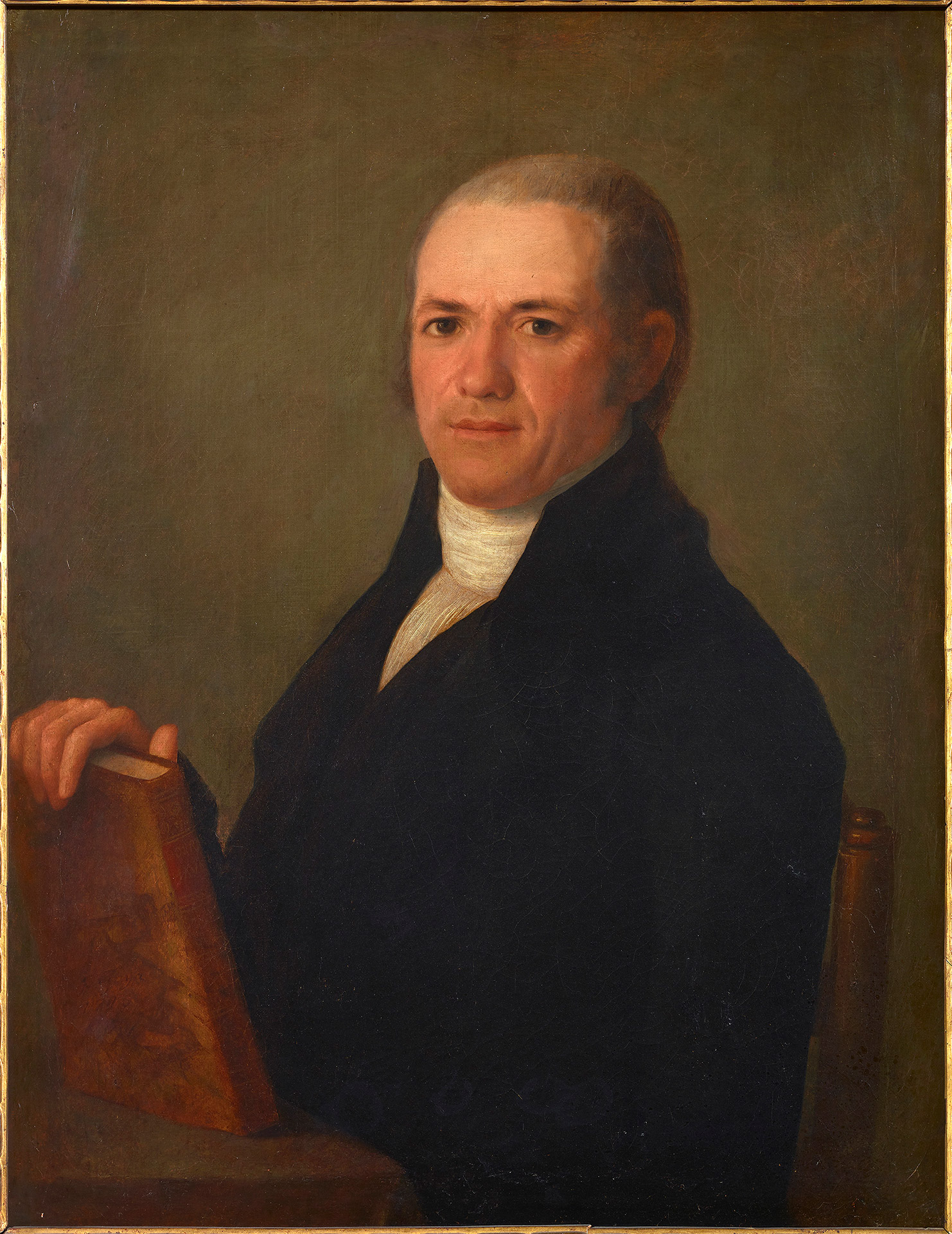
Agustín Esteve (Valencia, 1753-1820)
Portrait of a Gentleman
circa 1805
WORK INFORMATION
Oil on canvas, 70 x 54 cm
OTHER INFORMATION
Apocryphal signature at the bottom left, on the book: "F. Goya / 1786" Inscription on the book spine: "BOERA / HAVE"
This portrait is a long, almost half-length bust of a gentleman around 40 years old against a neutral ground. He is seated at a table on which he props a book with his right hand; the letters on the spine read "BOERA / HAVE", no doubt in reference to one of the works published by the famous Dutch physician, humanist and botanist Herman Boerhaave or Boerhave (1668–1738). One of his specialities is probably related to the sitter's profession or interests, or perhaps to the publication of the scientist's works in Spain.
Formerly attributed to Goya on the strength of the clearly apocryphal signature added to the book cover, over an area that was obviously repainted in an attempt to blend its deliberately confusing appearance with the original painting, this work is nevertheless absolutely, unmistakably characteristic of the Valencian artist Agustín Esteve, who laboured in the wake of the master from Fuendetodos as a copier of his more official portrait commissions yet still managed to build a successful career as a prolific portraitist in his own right. Esteve always showed a special sensibility and undeniable talent for this genre, which he perfected over the years. However, like many other painters of his time, his merits were and still are overshadowed by Goya's work and have yet to be reviewed in depth; in many cases this has resulted in the voluntary misattribution of his paintings to the Aragonese artist, as occurred with this very canvas.
Despite its visibly worn surface, the portrait presents all the hallmarks of Esteve's personal style in the first decade of the 19th century, a date also in keeping with the attire of the sitter, who wears a high-collared frock coat and white cravat. Portraits from this period of the Valencian master's production often posed subjects in the same position, seated almost in profile but with the upper body twisted to face the viewer and the head tilted slightly back, with a subtle static stiffness apparent in many of his portraits with this format. Above all, however, we notice an especially delicate technique in the softness of the brushstrokes, which is most obvious in the modelling of the hands, the subtle shadow of stubble on the gentleman's face and smooth gradation of his ash-coloured hair. The entire portrait exudes a serene moderation devoid of decorative accessories and a well-gauged masculine gravity, which is a large part of its appeal, underscored by the neutral background against which the gentleman is posing and by his serious yet kindly mien. [José Luis Díez]

